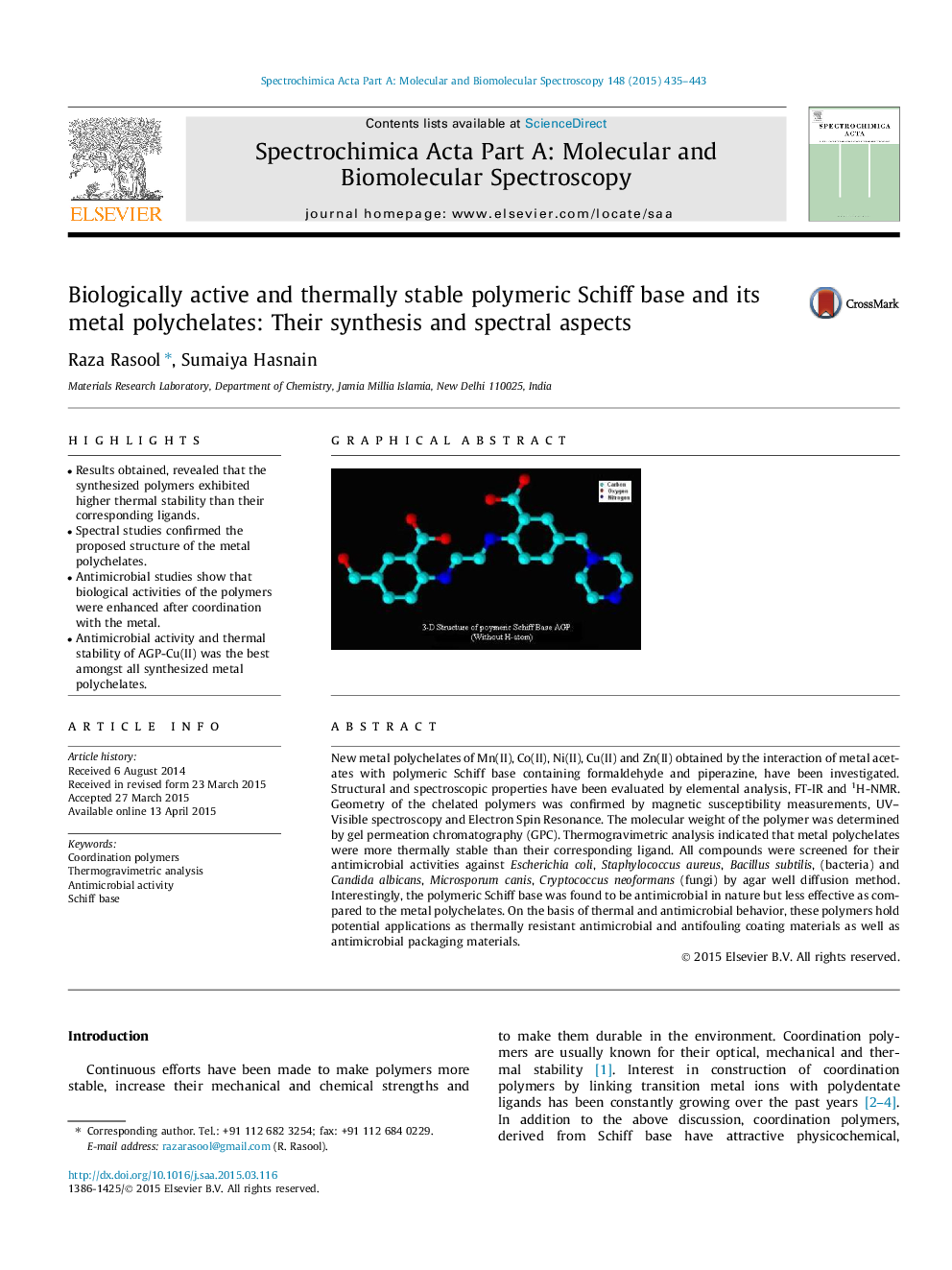| Article ID | Journal | Published Year | Pages | File Type |
|---|---|---|---|---|
| 1232148 | Spectrochimica Acta Part A: Molecular and Biomolecular Spectroscopy | 2015 | 9 Pages |
•Results obtained, revealed that the synthesized polymers exhibited higher thermal stability than their corresponding ligands.•Spectral studies confirmed the proposed structure of the metal polychelates.•Antimicrobial studies show that biological activities of the polymers were enhanced after coordination with the metal.•Antimicrobial activity and thermal stability of AGP-Cu(II) was the best amongst all synthesized metal polychelates.
New metal polychelates of Mn(II), Co(II), Ni(II), Cu(II) and Zn(II) obtained by the interaction of metal acetates with polymeric Schiff base containing formaldehyde and piperazine, have been investigated. Structural and spectroscopic properties have been evaluated by elemental analysis, FT-IR and 1H-NMR. Geometry of the chelated polymers was confirmed by magnetic susceptibility measurements, UV–Visible spectroscopy and Electron Spin Resonance. The molecular weight of the polymer was determined by gel permeation chromatography (GPC). Thermogravimetric analysis indicated that metal polychelates were more thermally stable than their corresponding ligand. All compounds were screened for their antimicrobial activities against Escherichia coli, Staphylococcus aureus, Bacillus subtilis, (bacteria) and Candida albicans, Microsporum canis, Cryptococcus neoformans (fungi) by agar well diffusion method. Interestingly, the polymeric Schiff base was found to be antimicrobial in nature but less effective as compared to the metal polychelates. On the basis of thermal and antimicrobial behavior, these polymers hold potential applications as thermally resistant antimicrobial and antifouling coating materials as well as antimicrobial packaging materials.
Graphical abstractFigure optionsDownload full-size imageDownload as PowerPoint slide
